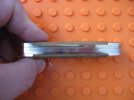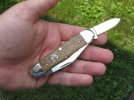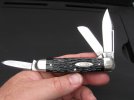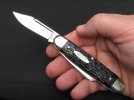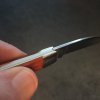315
Gold Member
- Joined
- Dec 2, 2017
- Messages
- 7,070
So when I've been looking around the internet at some traditional folders I've noticed something. Sometimes the blades do not appear completely open when they are fully deployed. The spine of the blade is offset at an angle compared to the springs. Is it by design or lack of quality control? I get it in the case of a stockman or other serpentine design that the spine flows with the contour of the spring, but when the spring is straight I would assume they would align, or at least be very close.


